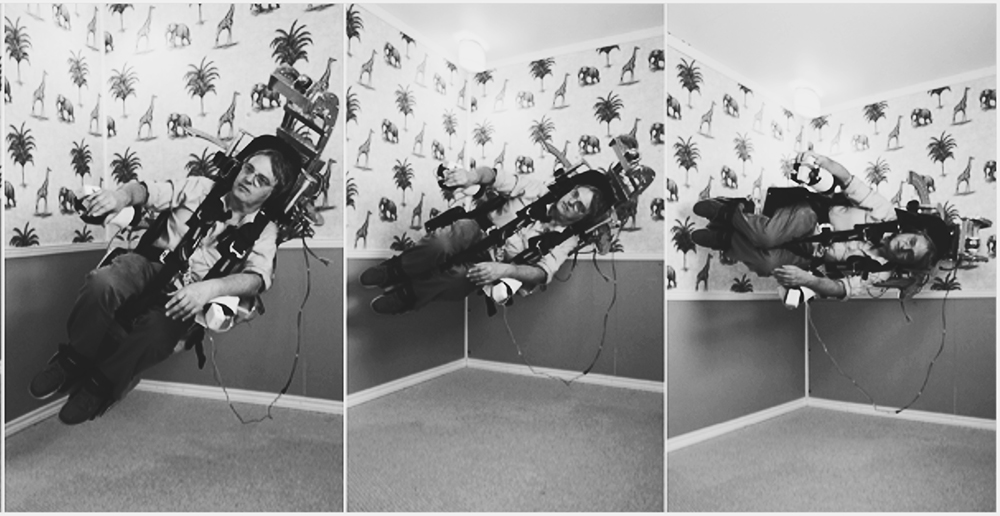Matt Dionne | Assistant News Editor
Featured image: Laurence Harris, the director of the Centre for Vision Research takes the tumbling room for a spin thanks to the large funding received by the Canadian Foundation for Innovation Grant. | Courtesy of the Centre for Vision Research
The Centre for Vision Research has purchased three new pieces of equipment following a 2013 Canadian Foundation for Innovation grant.
The grant enabled the purchase of a tumbling room, a full-size room that can rotate around a seated subject. The subject is also able to rotate independently around an earth-horizontal axis.
“Success breeds success, which continues to propel the Centre for Vision Research to ever-increasing global status as one of the leading vision groups in the world,” says Laurence Harris.
Harris, director of the Centre for Vision Research, or CVR, feels that the department’s success can be attributed to a strong team of researchers from many different disciplines, as well as a stellar reputation, given the department’s top-five ranking among similar facilities in the world.
The tumbling room will be used to perform experiments that are related to space research, such as the effects of gravity on perception, as well as the effects of moving on visual identification, such as spotting pedestrians while driving.
Also purchased was an eight-foot sphere, which, like the tumbling room, allows the subject and the room to be rotated independently around the same axis.
“Unlike the tumbling room, the axis of rotation can be adjusted from Earth Vertical to Earth Horizontal or any angle in between. The inside of the sphere is covered with randomly placed dots,” explains Harris.
“Experiments carried out in the sphere room will enable us to assess the contributions of visual and non-visual cues to perceived self-motion.”
The third addition is a large field, high-resolution stereo display with head tracking. The field covers the entire visual field of the viewer, which extends out to 112 degrees on each side.
“The display can be viewed while sitting in a chair when the visual display can be controlled by a joystick, or while standing when the display can be linked to a treadmill on which the subject can walk,” explains Harris.
This edgeless graphics display will be used to provide information about the role of the far periphery in visual perception, navigation and balance. It may also enhance our understanding of why older people are more prone to falls.
Harris states that the new equipment is available for use by members of the CVR and encourages members of the York community to collaborate on projects using the resources at CVR’s disposal.



This piece was a lifekacjet that saved me from drowning.